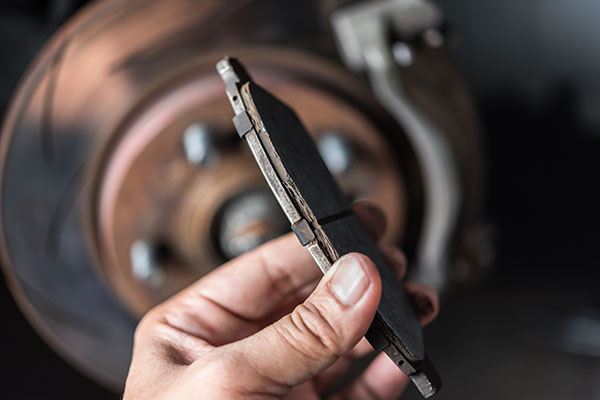
When you're cruising down the highway with your favorite tunes on, or navigating through bustling city streets, there's a silent guardian that ensures your safety – your car's brake pads. Often overlooked and taken for granted, these vital components are a part of our daily commutes, and are used all the time. But what happens when they start to have issues? Your car has a way of whispering its woes if you're willing to listen.
Loud Unfamiliar Noise
Imagine you're enjoying a serene drive and suddenly, a high-pitched screech shatters the calm. This alarming sound is often the first red flag that your brake pads have worn thin. Manufacturers ingeniously install a small metal shim called an indicator on the pads themselves, which creates this noise as a built-in alarm system when it's time for a replacement. If your peaceful drive is interrupted by such a screech, take heed – it's time to give those brakes some love.
A Spongy Feeling Pedal
As you press down on the brake pedal, you expect a certain firmness – an assurance that your vehicle will stop on a dime. But what if that reliable resistance starts to feel more like stepping on a sponge? This unnerving change in pedal feel can signal that your brake pads have worn down to the point where they can no longer offer that staunch opposition to your foot's pressure. It's as though your car is sighing under the strain – and it's definitely not something to ignore.
Vibration or Pulsating
Let's say you're descending a steep hill, and you apply the brakes, only to feel a disconcerting vibration or pulsating sensation through the pedal or steering wheel. This isn't just any random shudder; it's a distinct tremor sent out by weary brake pads struggling to maintain their grip. The vibration is caused by uneven surfaces on worn-out pads making inconsistent contact with the rotors. It's as if your car is shaking its head in distress – begging for new brake pads.
Longer Stopping Distances and Reduced Responsiveness
When new, brake pads respond swiftly and assertively at the slightest tap of the pedal. However, as they wear down, they lose their eagerness. You might find yourself pushing harder and farther than before just to achieve the same stopping power. It's akin to having an increasingly sluggish conversation with your vehicle where its responses become more drawn out over time.
The Visual Clue
If you're more hands-on with car care, then peering through the spokes of your wheel could reveal much about your brake pad situation without uttering a word. Typically, there should be at least 1/4 inch of pad visible. Anything less than that is like seeing warning flags waving right before your eyes – an unmistakable visual cue that it's time for a change.
Recognizing these signs is crucial because ignoring them doesn't just lead to diminished braking performance; it also poses serious risks to your safety. When you notice them, make sure to contact us at Snider Auto Care, and we will take care of all your maintenance and repair needs!